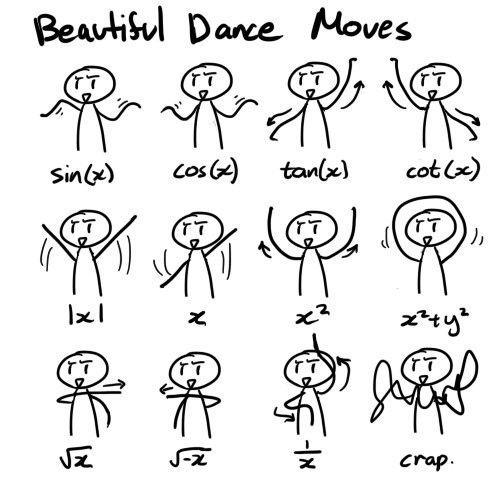After being called one of the top 50 philosophy bloggers, I feel almost obliged to write another post on philosophy. This might vex Jat who, while appreciating the post on my first car, was somewhat less than enthusiastic about my deeper thoughts. Also looking askance at my philosophical endeavors would be a badminton buddy of mine who complained that my posts on death scared the bejesus out of him. But, what can I say, I have been listening to a lot of philosophy. I listened to the lectures by Shelly Kagan on just that dreaded topic of death, and by John Searle (again) on the philosophy of mind.
Listening to these lectures filled me with another kind of dread. I realized once again how ignorant I am, and how much there is to know, think and figure out, and how little time is left to do all that. Perhaps this recognition of my ignorance is a sign of growing wisdom, if we can believe Socrates. At least I hope it is.
One thing I had some misconceptions about (or an incomplete understanding of) was this concept of dualism. Growing up in India, I heard a lot about our monistic philosophy called Advaita. The word means not-two, and I understood it as the rejection of the Brahman and Maya distinction. To illustrate it with an example, say you sense something — like you see these words in front of you on your computer screen. Are these words and the computer screen out there really? If I were to somehow generate the neuronal firing patterns that create this sensation in you, you would see these words even if they were not there. This is easy to understand; after all, this is the main thesis of the movie Matrix. So what you see is merely a construct in your brain; it is Maya or part of the Matrix. What is causing the sensory inputs is presumably Brahman. So, to me, Advaita meant trusting only the realness of Brahman while rejecting Maya. Now, after reading a bit more, I’m not sure that was an accurate description at all. Perhaps that is why Ranga criticized me long time ago.
In Western philosophy, there is a different and more obvious kind of dualism. It is the age-old mind-matter distinction. What is mind made of? Most of us think of mind (those who think of it, that is) as a computer program running on our brain. In other words, mind is software, brain is hardware. They are two different kinds of things. After all, we pay separately for hardware (Dell) and software (Microsoft). Since we think of them as two, ours is an inherently dualistic view. Before the time of computers, Descartes thought of this problem and said there was a mental substance and a physical substance. So this view is called Cartesian Dualism. (By the way, Cartesian coordinates in analytic geometry came from Descartes as well — a fact that might enhance our respect for him.) It is a view that has vast ramifications in all branches of philosophy, from metaphysics to theology. It leads to the concepts of spirit and souls, God, afterlife, reincarnation etc., with their inescapable implications on morality.
There are philosophers who reject this notion of Cartesian dualism. John Searle is one of them. They embrace a view that mind is an emergent property of the brain. An emergent property (more fancily called an epiphenomenon) is something that happens incidentally along with the main phenomenon, but is neither the cause nor the effect of it. An emergent property in physics that we are familiar with is temperature, which is a measure of the average velocity of a bunch of molecules. You cannot define temperature unless you have a statistically significant collection of molecules. Searle uses the wetness of water as his example to illustrate emergence of properties. You cannot have a wet water molecule or a dry one, but when you put a lot of water molecules together you get wetness. Similarly, mind emerges from the physical substance of the brain through physical processes. So all the properties that we ascribe to mind are to be explained away as physical interactions. There is only one kind of substance, which is physical. So this monistic philosophy is called physicalism. Physicalism is part of materialism (not to be confused with its current meaning — what we mean by a material girl, for instance).
You know, the trouble with philosophy is that there are so many isms that you lose track of what is going on in this wild jungle of jargonism. If I coined the word unrealism to go with my blog and promoted it as a branch of philosophy, or better yet, a Singaporean school of thought, I’m sure I can make it stick. Or perhaps it is already an accepted domain?
All kidding aside, the view that everything on the mental side of life, such as consciousness, thoughts, ideals etc., is a manifestation of physical interactions (I’m restating the definition of physicalism here, as you can see) enjoys certain currency among contemporary philosophers. Both Kagan and Searle readily accept this view, for example. But this view is in conflict with what the ancient Greek philosophers like Socrates, Plato and Aristotle thought. They all believed in some form of continued existence of a mental substance, be it the soul, spirit or whatever. All major religions have some variant of this dualism embedded in their beliefs. (I think Plato’s dualism is of a different kind — a real, imperfect world where we live on the one hand, and an ideal perfect world of forms on the other where the souls and Gods live. More on that later.) After all, God has to be made up of a spiritual “substance” other than a pure physical substance. Or how could he not be subject to the physical laws that we, mere mortals, can comprehend?
Nothing in philosophy is totally disconnected from one another. A fundamental stance such as dualism or monism that you take in dealing with the questions on consciousness, cognition and mind has ramifications in what kind of life you lead (Ethics), how you define reality (Metaphysics), and how you know these things (Epistemology). Through its influence on religions, it may even impact our political power struggles of our troubled times. If you think about it long enough, you can connect the dualist/monist distinction even to aesthetics. After all, Richard Pirsig did just that in his Zen and the Art of Motorcycle Maintenance.
As they say, if the only tool you have is a hammer, all problems begin to look like nails. My tool right now is philosophy, so I see little philosophical nails everywhere.





 In today’s world, if you don’t have a website, you don’t exist. Well, that may not be totally accurate — you may do just fine with a facebook page or a blog. But the democratic nature of the Internet inspires a lot of us to become providers of information rather than just consumers. The smarter ones, in fact, strategically position themselves in between the providers and the consumers, and reap handsome rewards. Look at the aforementioned facebook, or Google, or any one of those Internet businesses that made it big. Even the small fries of the Internet, including small-time bloggers such as yours faithfully, find themselves facing web-traffic and stability kind of technical issues. I recently moved from my shared hosting at NamesDirect.com to a virtual private host at Arvixe.com, and even more recently to InMotion. There, I have done it. I have gone and dropped technical jargon on my readers. But this post is on the technical choices budding webmasters have. (Before we proceed further, let me disclose the fact that the links to
In today’s world, if you don’t have a website, you don’t exist. Well, that may not be totally accurate — you may do just fine with a facebook page or a blog. But the democratic nature of the Internet inspires a lot of us to become providers of information rather than just consumers. The smarter ones, in fact, strategically position themselves in between the providers and the consumers, and reap handsome rewards. Look at the aforementioned facebook, or Google, or any one of those Internet businesses that made it big. Even the small fries of the Internet, including small-time bloggers such as yours faithfully, find themselves facing web-traffic and stability kind of technical issues. I recently moved from my shared hosting at NamesDirect.com to a virtual private host at Arvixe.com, and even more recently to InMotion. There, I have done it. I have gone and dropped technical jargon on my readers. But this post is on the technical choices budding webmasters have. (Before we proceed further, let me disclose the fact that the links to 


 Unreal Blog has been chosen as one of the top 50 philosophy blogs in the world! It came as a surprise when the Zen College Life listed this blog (at least
Unreal Blog has been chosen as one of the top 50 philosophy blogs in the world! It came as a surprise when the Zen College Life listed this blog (at least 
